In recent years, with the rapid development of IoT applications and markets, various IoT technologies have emerged and accelerated, leading to an increasing demand for low-cost, high-performance IoT connectivity technologies. Meanwhile, traditional small wireless technologies have stagnated in the past decade, gradually failing to meet market demands.
To address this need, Semtech has developed the high-performance, low-cost, and more stable LoRa Core LLCC68 chip to aid the development of the traditional small wireless connectivity market.
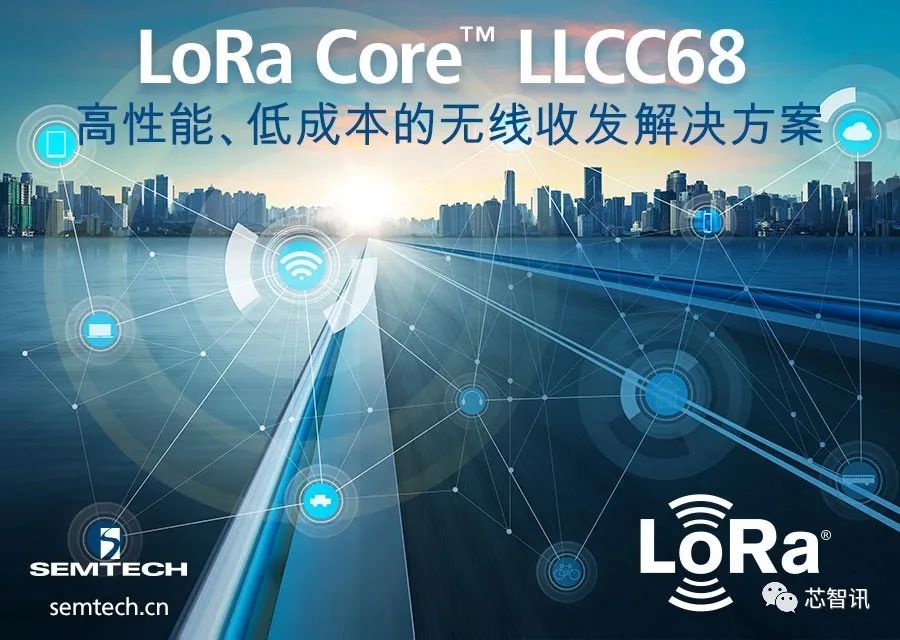
Three Reasons to Choose LoRa Core LLCC68:
-
LLCC68 supports both LoRa mode and FSK mode.
-
Compared to traditional small wireless products, the sensitivity of LLCC68 in FSK mode is higher.
-
LLCC68’s LoRa mode supports more comprehensive performance and solutions.
The LoRa Core LLCC68 can meet various wireless transmission needs in the market, with target application markets including:
-
The existing FSK small wireless market.
-
LoRa-based smart home applications.
-
Industrial control scenarios that require interference resistance, long-distance, and real-time capabilities.
-
Existing LoRa scenarios that do not require ultra-long distances.
A Stable Supply Chain is a Competitive Advantage
The IoT industry is no stranger to FSK and LoRa wireless communication, both of which are widely used IoT technologies. The term LoRa comes from the first letters of the English words Long Range, representing “long distance.” LoRa was originally based on the principles of FSK communication, but it is an innovative physical layer modulation technology based on Chirp Spread Spectrum (CSS), first introduced by a startup called Cycleo founded by a few young people in France.
In 2012, Semtech, a global leader in semiconductor products and solutions, acquired this French company and combined this modulation technology with its deep expertise in RF and mixed-signal chip technology, launching a series of chips named “LoRa” that feature low power consumption, long range, and high flexibility. In recent years, Semtech has continuously optimized chips, software, and cloud/intelligent technologies based on LoRa technology, developing a complete set of LoRa communication chip solutions, including various LoRa chips for gateways and terminals, opening the path for LoRa chips to become widely popular globally.
As a global company, Semtech’s resource system distributed around the world ensures the supply of chips like LoRa. The product development and intellectual property of Semtech’s LoRa chips are in Europe, ensuring smooth and comprehensive innovative technology collaboration. The LoRa chips sold in China are developed and supplied in Switzerland, and their sales in the Chinese market are not affected by the international technology trade environment. At the same time, Semtech has authorized two chip partners in Europe and China to produce LoRa chip products, diversifying the supply of LoRa chips and ensuring extremely reliable and stable chip support for LoRa networks operating in China.
When designing LoRa chips, Semtech fully considered the design of peripheral circuits, procurement convenience, and cost. In developing the LoRa Core LLCC68 chip, based on these considerations, it provided a brand-new reference design. This development kit is based on all domestically produced, performance, and supply-stable peripheral components. Since it does not require temperature-compensated oscillators and PA devices, its overall cost is very low. It can help customers and partners reduce supply chain risks in traditional low-speed FSK technology applications and face competition with high-cost performance solutions.
Innovative Technology is a Core Competitive Advantage
As a physical layer wireless modulation technology for creating long-distance communication connections, LoRa has become a globally popular innovative IoT technology. It mainly operates in global free frequency bands (i.e., unlicensed bands), including 433, 470, 868, and 915 MHz. From the perspective of networking mode, LoRa commonly adopts a star network, where gateways connect to terminal nodes in a star pattern, but terminal nodes are not bound to a unique gateway, allowing their uplink data to be sent to multiple gateways. Theoretically, users can achieve flexible LoRa networking through Mesh, point-to-point, or star network protocols and architectures.
LoRa technology does not require the construction of base stations; one gateway can control many devices, and the networking method is flexible, significantly reducing construction costs. LoRa combines its self-organizing, secure, and controllable features with the fragmented, low-cost, and high-connectivity demands of IoT, making it widely deployed in various vertical industries such as smart communities, smart homes and buildings, smart metering, smart agriculture, and smart logistics.
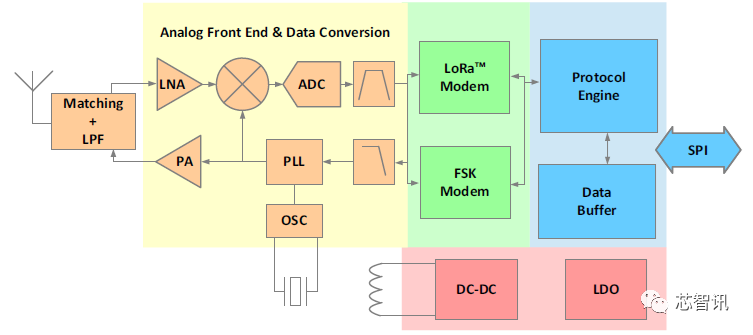
Based on its broadband linear frequency modulation (Chirp Modulation) technology, which has been validated in military and space communication for decades, LoRa greatly increases communication range while maintaining low power consumption compared to traditional FSK technology and other short-range RF technologies with insufficient stability and security. LoRa features long transmission distances and strong anti-interference capabilities.
Taking Semtech’s latest LoRa Core LLCC68 device as an example, LoRa technology has the following network features:
Longer Communication Distance: Compared to traditional FSK technology, the sensitivity of LoRa is closer to the theoretical limit of Shannon’s theorem and breaks the implementation limits of traditional FSK narrowband systems.
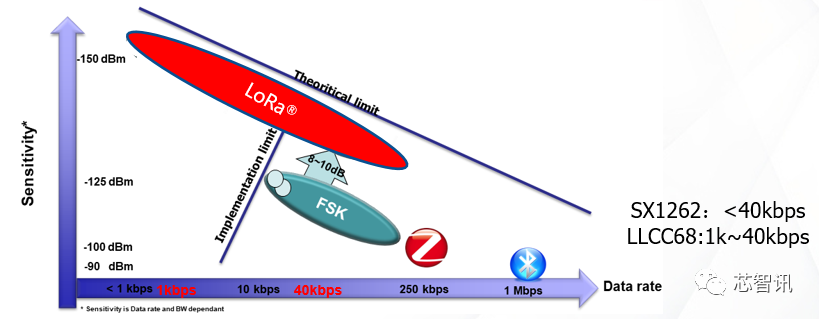
Stronger Anti-Interference Ability: LoRa uses spread spectrum technology, allowing it to receive normally under noise up to 20dB (LLCC68 supports below 17.5dB), while FSK theoretically requires 8dB above noise to ensure the required PER; LoRa can tolerate stronger burst random interference. If the burst length is < ½ of LoRa’s symbol length, its sensitivity degradation will be <3dB, and the interference duty cycle will be <50%.
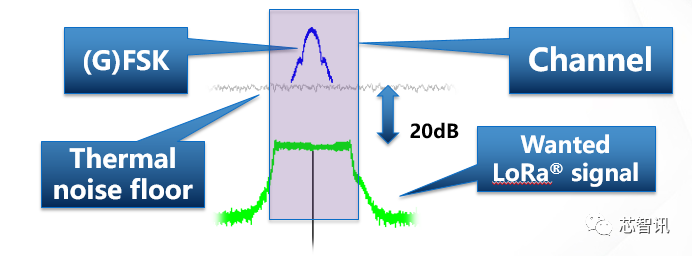
Overall Low Power Consumption: The sleep current of the LLCC68 device is less than 1uA, with a transmit current of 45mA@17dBm and a receive current of only 5mA. Thanks to Semtech’s innovative LoRa CAD technology, the entire wake-up process takes only about 2 symbol times, consisting of approximately 1 symbol for receiving (receive current) and 1 symbol for timing calculation, during which the current is about 50% of the receive mode. However, at the same rate, FSK generally requires 3 bytes or more of preamble for receiving synchronization, and the receive window needs to be open for over 5ms; at the same rate, during the listening period (WOR), the battery life of LoRa is 3 to 4 times that of FSK.
Larger Network Capacity: LoRa communicates in the same frequency band similar to code division multiplexing, and different spreading factors in the same frequency band do not interfere with each other. This is due to comprehensive innovations and optimizations in factors determining network capacity, such as the frequency of packet transmission by nodes, the length of data packets, signal quality, node rate, available channel count, base station/gateway density, signaling overhead, and retransmission counts. Based on these characteristics, LoRa can achieve on-demand deployment.
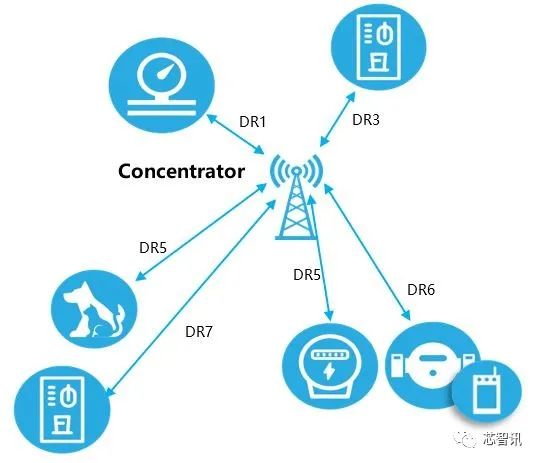
LoRa Does Not Require Temperature-Compensated Oscillators
Currently, all over the world are promoting further coordination between epidemic prevention and economic and social development, with IoT, 5G, and intelligent technologies playing increasingly important roles. The “new infrastructure” continuously promoted by the Chinese government is also transforming into a new development momentum. The current shortage of temperature-compensated oscillators has caused problems for both mobile communication modules and traditional FSK small wireless communications.
The principles of LoRa technology make it insensitive to frequency offset. For example, using the LoRa BW125_SF9 setting, even with a /-30ppm oscillator, a sensitivity of [email protected] can be achieved without needing a temperature-compensated oscillator. However, other mobile communication modules and FSK use modulation methods that are very sensitive to frequency.
For example, in FSK technology, the communication principle requires that the frequency offset must be within Fdev/4 to ensure that the theoretical sensitivity drop is within 2dB; even using a /-2ppm temperature-compensated oscillator, it cannot achieve [email protected] sensitivity, because a 400Hz Fdev can only be realized under harsh laboratory conditions.
Therefore, developing related applications using the ordinary crystal LoRa Core LLCC68 device can significantly reduce supply chain risks and also lower costs due to the lack of need for temperature-compensated oscillators.
Download LLCC68 documentation:
https://www.semtech.com/products/wireless-rf/lora-transceivers/llcc68
Launch “Super Urgent”! TSMC prioritizes production of automotive chips, facing three major internal injuries!
Unveiling Xiaomi and Motorola’s wireless charging technology, radiation issues will become a hidden worry?
FF announces a reverse merger in the US, expecting to sell over 400,000 vehicles in the next five years! Is Geely working with Foxconn?
Huawei’s smartphone shipments plummet by over 40%, falling out of the global top five? Xiaomi benefits and becomes third globally.
Stock price plummets by 21%, O-Film plans to sell four subsidiaries including Guangzhou Delta! May have been kicked out of Apple’s supply chain.
Honor V40 released! Zhao Ming: Almost all suppliers, including Qualcomm and MediaTek, have resumed cooperation.
Ren Zhengfei: HarmonyOS will enter competition, Kunpeng and Ascend will also never stop!
MediaTek’s new flagship Dimensity 1200 detailed: Can it stabilize the high-end market amidst the “overturn” of Snapdragon 888?
Breaking! Reports say the Trump administration is once again targeting Huawei: 8 licenses revoked, most of 150 applications rejected!
2020’s Top Ten Semiconductor Manufacturers: Intel first! MediaTek returns to the top ten, everyone receives a bonus of 100,000!
Heavily investing $28 billion! TSMC aims to double revenue in five years! First response to rumors of building a factory in Japan.
The first RISC-V AI single-board computer released! Sifang Technology partners to fill the RISC-V hardware supply chain.
For industry communication and cooperation, please add WeChat: icsmart01Official group chat of Chip Intelligence: 221807116